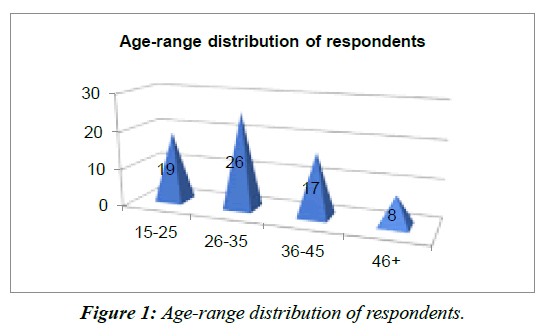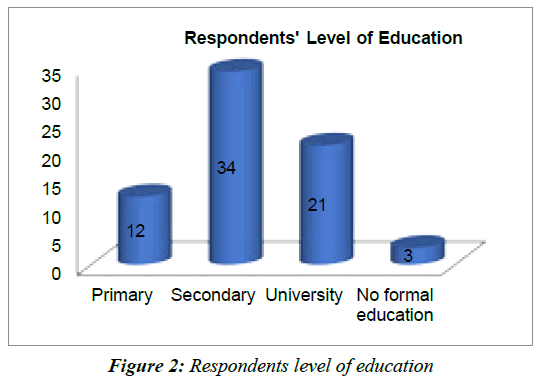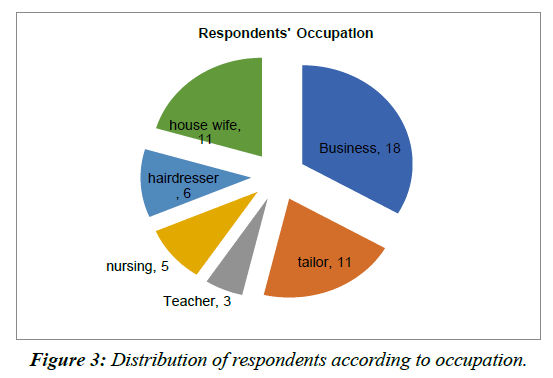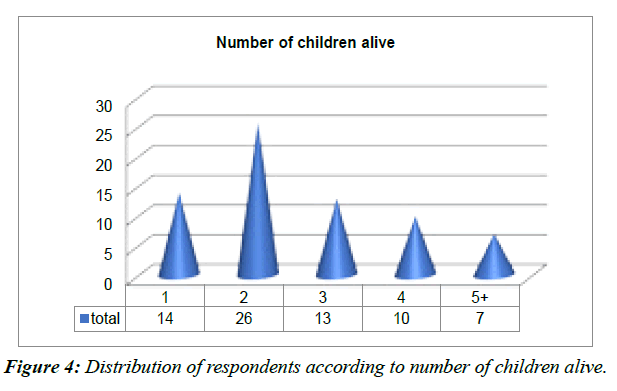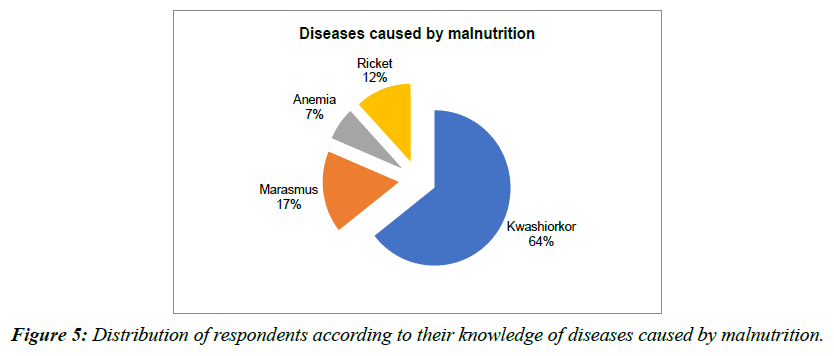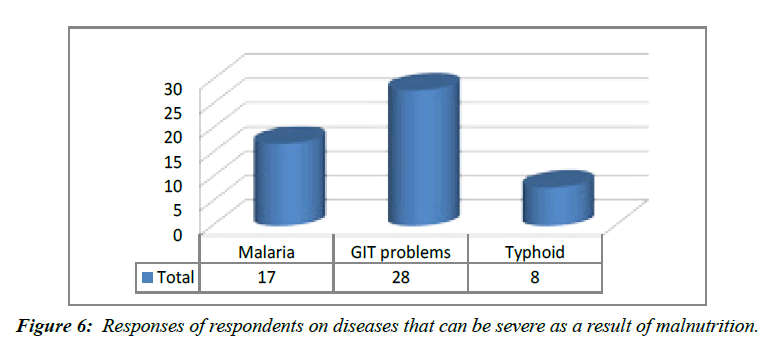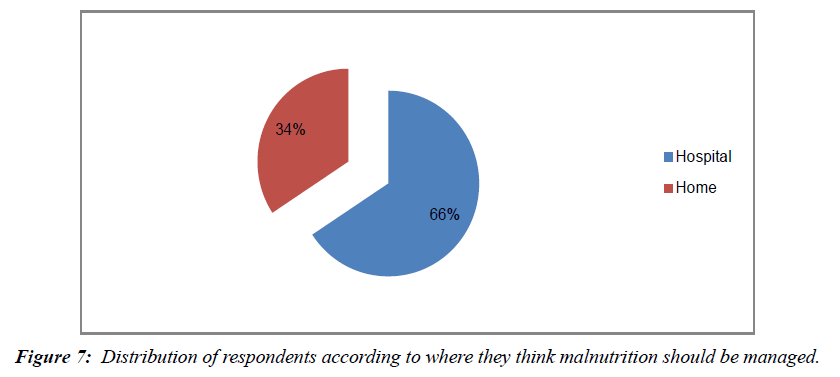Research Article - Journal of Dermatology Research and Skin Care (2023) Volume 7, Issue 5
Effectiveness in the preventive management of malnutrition in under-fives by mothers and care-givers in the azire health area in north-west cameroon
Bodzewan Emmanuel Fonyuy1*, Manjong Sirri Delaris21Department of Public Health Expert, Pinnacle University Institute of Health and Technology-Bamenda, Cameroon
2Training School for State Registered Nurses-Bamenda, Cameroon
- *Corresponding Author:
- Bodzewan Emmanuel Fonyuy
Department of Public Health Expert
Pinnacle University Institute of Health and Technology-Bamenda, Cameroon
E-mail: ebodzewan@gmail.com
Received: 25-Sept-2023, Manuscript No. AADRSC-23-117796; Editor assigned: 27-Sept-2023, PreQC No. AADRSC-23-117796(PQ); Reviewed: 11-Oct-2023, QC No AADRSC-23-117796; Revised: 16-Oct-2023, Manuscript No. AADRSC-23-117796(R); Published: 23-Oct-2023, DOI:10.35841/aadrsc-7.5.168
Citation: Eleskafy ET, Khalafallla M. Effectiveness in the preventive management of malnutrition in under-fives by mothers and care-givers in the azire health area in north-west cameroon. Dermatol Res Skin Care. 2023; 7(5):168
Abstract
According to WHO, malnutrition remains the biggest contributor to child mortality with 6million children dying from hunger each year. Malnutrition also occurs when an individual’s diet does not provide him/her with adequate calories and proteins needed for maintenance and growth or they cannot fully utilize the food they eat due to illness while those who suffer from over nutrition consumes too many calories. The main objective was to assess the knowledge and practical measures employed by mothers and caregivers in Azire Health Area in the preventive management of malnutrition in the Azire Health Area. The cross-sectional design was employed in which primary data was collected from a sample of mothers with under-five children to be a representative of mothers with under-five children in the study site; on their knowledge and its preventive management in the under-fives and their findings analyzed. Results revealed 78.9% had good knowledge on what malnutrition is. On the distribution of respondents according to their knowledge on the diseases caused by malnutrition, 84.3% had a good knowledge on the diseases caused by malnutrition while 16.7% had no knowledge. For those with good knowledge of the disease caused by malnutrition, 78% said kwashiorkor. Of the mothers who could not ensure that their baby had a balanced diet, 66.6% complained of lack of finance while 33.3% complained of inadequate knowledge on which food was best for the child. With respect to the proposed solutions to combat malnutrition, 51.9% said IEC should be reinforced. Malnutrition remains a serious global health issue affecting almost everyone in the developing world at some point in their life with under-five being the most vulnerable. Children who are spaced and well fed stand a better chance of being healthy and having good cognitive abilities than those who are not.
Keywords
Malnutrition, Balanced diet, Under-fives, Kwashiorkor, Marasmus, Mothers.
Introduction
Malnutrition according to World Health Organization (2016) is a condition that results from deficiencies, excesses or imbalances in a person’s intake of energy and/or nutrients. The term malnutrition covers two broad groups of conditions. One is ‘under nutrition’-which includes stunting (low height for age), wasting (low weight for height), underweight (low weight for age) and micronutrient deficiencies or insufficiencies (a lack of important vitamins and minerals). The other is overweight, obesity and diet-related non communicable diseases (such as heart disease, stroke, diabetes and cancer).
However according to malnutrition can also occur when an individual’s diet does not provide him/her with adequate calories and proteins needed for maintenance and growth or they cannot fully utilize the food they eat due to illness (under nutrition), while those who suffer from over nutrition consumes too many calories. Malnutrition is not exclusively a problem of extreme poverty, nor only of the young, but affects all communities around the world and people of all ages including pregnant women [1].
It is vital that malnutrition is addressed in children as malnutrition manifestations and symptoms begin to appear in the first two years of life. Coinciding with the mental development and growth periods in children, Protein Energy Malnutrition (PEM) is said to be a problem at ages 6months to 2years. Thus, this period is considered a window period during which it is essential to prevent and/or manage acute and chronic malnutrition. In 2012, 8.8million deaths in children less than 5years were due to underweight of which 93% occurred in Africa and Asia. Young, malnourished children are affected by compromised immune systems by succumbing to infectious diseases and are prone to cognitive development delays, damaging long term psychological and intellectual development effects (WHO, 2013).
Globally, malnutrition is regarded as the most important risk factor for illness and death, and it is associated with 52.5 % of all deaths in young children [2].
The complex interaction between infection and malnutrition creates a hostile environment that perpetuates a vicious circle that leads to the two entities benefiting from each other. Some of the phenomenon involved during different parts of the cycle includes decreases in the activity of macrophages, diminishment of the inflammatory response, and a reduction in the capacity to create specific antibodies. However, there are two effects that can occur in the presence of both malnutrition and infection. The first one is the synergistic effect, and it happens when an infection worsens the malnutrition or when the malnutrition contributes to decreasing the immune response to infection. The second effect is an antagonist mechanism, which occurs less frequently than the synergistic effect. The antagonistic mechanism happens when malnutrition decreases the multiplication of the agent [3]. Malnutrition can make a person more susceptible to infection, and infection contributes to malnutrition, which causes a vicious cycle. An inadequate dietary intake leads to weight loss, lowered immunity, mucosal damage, invasion by pathogens, and impaired growth and development in children. A sick person's nutrition is further aggravated by diarrhoea, malabsorption, loss of appetite, diversion of nutrients for the immune response, and urinary nitrogen loss, all of which led to nutrient losses and further damage to defence mechanisms. These, in turn, cause reduced dietary intake. In addition, fever increases both energy and micronutrient requirements. Malaria and influenza, for example, have mortality rates proportionate to the degree of malnutrition [4].
Meeting the nutrition requirements of children aged 0-59months has become a global challenge and as such an estimate of 55million preschool children globally are malnourished. Malnutrition has become an urgent global health issue with under-nutrition killing or disabling millions of children each year. Malnutrition also prevents millions more from reaching the intellectual and full productive potential. In children, malnutrition accounts for approximately 1million deaths annually with approximately 20million children under the age of five suffering from severe malnutrition (WHO, 2013) [5].
WHO further stipulates that about 149million under-fives are stunted which results from chronic under-nutrition typically related to poor socioeconomic status, inappropriate maternal nourishment, recurrent illness and/or improper child feeding and care in infancy. In 2019 worldwide, 21.3% of under-five had stunted growth, 47million under-five were wasted and from this, half of them were in Asia and 1 out of 4 were in Sub-Saharan Africa (WHO, 2020) [6].
Despite impressive progress in reducing hunger and poverty, about 800 million people worldwide continue to suffer from undernourishment. Food insecurity and malnutrition are problems affecting rural areas, as part of a pattern of deeprooted spatial inequalities. Conventional sectorial agriculture and food policies often overlook such territorial disparities and, consequently, are unlikely to suffice to meet the Sustainable Development Goals (SDGs) of ending hunger and achieving food security for all by 2030 [7].
In South Sudan, Maternal and child malnutrition is a significant public health problem. Among children aged 6-59 months, 31% are stunted, 28% are underweight, and nearly 23% are acutely malnourished of which 13% are estimated to suffer from moderate acute malnutrition and 10% from severe acute malnutrition. This is according to United Nations Children's Fund (2018) [8].
The prevalence of children under five years with acute malnutrition in Southern Sudan is one of the highest in the world – approximately one out of every five children suffer from moderate to severe acute malnutrition (wasting). The prevalence of acute malnutrition varies some with season and more substantially across regions of Southern Sudan [9].
Uganda is amongst the developing countries with the largest population of stunted children. An estimated 2.5million children less than 5years in Uganda are stunted and these places the country at the rank of the 14th based on the ranking of countries with large population of nutritionally challenged children. One out of every four children are short for their age according to the 2012 Uganda demographic and health survey and the incidence of poor nutritional status is highest in the relatively better off Sub Region of Southwestern Uganda [10].
In a study carried out in Cameroon precisely Bandja Health District, undernutrition was evaluated in terms of wasting, stunting and underweight and the prevalence were 3.2%, 16.4%, and 5.2% respectively. Boys were more stunted than girls and children less than 30months were often wasted than adult children. The first and second born in order were more stunted than the third or last born in order. Children of farming mothers were often more stunted and underweight than others. Children still being breastfed were more underweight than those whose mothers had finished breastfeeding [11].
Quality of food taken choices and quantity are all at the discretion of the mother or care giver. This problem is still very crucial in Cameroon where access to formal education, increase number of school dropouts, not attending ANC/IWC sessions and early weaning of children is still a major burning challenge.
Research Questions
Main Research question
What is the knowledge and practice of mothers and caregivers in Azire Health Area on the preventive management of malnutrition in under-fives?
Specific research questions
1. What is the knowledge of mothers and caregivers in Azire Health Area on the preventive management of malnutrition in under-fives?
2. What are the practical measures put in place by these mothers and caregivers on the preventive management of malnutrition in under-fives?
3. What are the challenges faced by these mothers and care givers on the preventive management of malnutrition in under-fives?
4. What are the measures put in place by these mothers and caregivers to bridge the gap faced in the preventive management of malnutrition in under-fives? [12].
Study Objectives
General objective
The main objective was to assess the knowledge and practical measures put in place by mothers and caregivers in Azire Health Area in the preventive management of malnutrition.
Specific objectives of the study
1. To assess the knowledge of mothers and caregivers on the preventive management of malnutrition in under-fives.
2. To assess the practical measures put in place by mothers and caregivers in the preventive management of malnutrition in under-fives.
3. To ascertain the challenges faced by mothers and caregivers in the preventive management of malnutrition in the under-fives.
4. To find out the measures put in place by the mothers and caregivers to overcome the challenges faced in the preventive management of malnutrition in under-fives [13].
Methodology
Research design
The cross-sectional design was employed in which primary data was collected from a sample of mothers with underfive children to be a representative of mothers with underfive children in the Health Area; on their knowledge and preventive management of malnutrition in the under-fives and their findings analyzed as per the study objectives.
Study population
The study population were made up of mothers and caregivers in the Azire Health Area with at least a child between the ages 0-59months during the study period. These subjects were used because they were accessible and had relevant information on the subject under study [14].
Sampling procedure
The sampling procedure for this study was a convenience sampling technique whereby the researcher had to meet most of the caretakers of children less than five years of age during the visits for medical care of their children (IWC).
Sample size and technique
A sample size is a subset of the population and therefore it is a portion that represents a whole population [15].
It is naturally neither practical nor feasible to study the whole population in this study. Hence, 70 mothers were selected using simple random sampling, from the population, which is less in number (size) but represents the population from which it is drawn so that true inferences about the population can be made from the results obtained. These set of individuals are known as the sample [16-20].
Data collection instruments
Data collection is the process of gathering and measuring information related to study variables in an established and systematic fashion that helps in answering research questions, aid in testing hypotheses and evaluating outcomes [9]. Questionnaires were prepared to assist in data collections. These Questionnaires were used as the main data collection instruments because of their efficiency and effectiveness in soliciting reliable and valid data.
Data collection procedure
Using simple random sampling, the researcher selected women as they came in for IWC visits. Also, the researcher again moved round the community identifying some homes with children under-five years of age and administering questionnaires to their parents after they had given their consent. 82 questionnaires were administered, and the researcher had a questionnaire return rate of 76 and finally 6 were sorted out since they were not filled giving a final total of 70 questionnaires [21-23].
Results
Socio-demographic characteristics
Out of the 140 respondents recruited for the study, 27% were within the ages 15-25years, 37% were within the ages 26-35years, 24% were within the ages 36-45years and 12% were within the age range 46years and above [Figure 1].
Distribution of respondents according to level of education
From the above, it shows that out of the 140 respondents, 17.1% had attain at least primary education, 48.6% had gone to secondary school, 30% had attain university and 4.3% had no formal education [Figure 2].
Distribution of respondents according to occupation
The figure above shows that out of the 140 respondents, 25.7% were businesswomen, 15.7% were tailors, 7.1%) were nurses, 4.3% were teachers, 8.6% were hairdressers,15.7% were housewives and 22.9% were students [Figure 3].
Distribution of respondents according to number of children alive
From the above, out of the 140 respondents recruited, 20% had one child, 37.1% had 2 children, 18.6% had 3 children, 14.3% had 4 children and 10% had 5 children and above [Figure 4] [24-30].
Knowledge of Malnutrition and Its Prevention
Respondents’ knowledge on malnutrition and its prevention
Out of the 140 respondents recruited, 10% said malnutrition was lack of food, 27.5% said malnutrition was irregular feeding patient, 51.4% said malnutrition was eating food that contains inadequate nutrients, 11.5% said malnutrition was eating food that does not contain all the classes of food (Table 1).
| Responses | Frequency | Percentage |
|---|---|---|
| Lack of food | 14 | 0.1 |
| Irregular feeding pattern | 38 | 0.275 |
| Eating food that contains inadequate nutrients | 76 | 0.514 |
| Eating food that does not contains all the classes of food | 16 | 0.115 |
| TOTAL | 140 | 1 |
Table 1: Distribution of respondents according to their knowledge on malnutrition and malnutrition prevention
Respondents’ knowledge on the causes of malnutrition
Of the 140 respondents, 57.1% said malnutrition results from inadequate feeding, 31.4% said malnutrition was caused by poverty,11.5% said malnutrition was caused by lack of knowledge (Table 2).
| Responses | Frequency | Percentage |
|---|---|---|
| Inadequate feeding | 80 | 57.10% |
| Poverty | 44 | 0.314 |
| Lack of knowledge | 16 | 11.50% |
| TOTAL | 140 | 100 |
Table 2: Distribution of respondents according to their knowledge on the causes of malnutrition
Respondents’ knowledge of diseases caused by malnutrition
Of the 59 respondents who said malnutrition causes diseases, 64% said malnutrition will lead to Kwashiorkor, 17% said malnutrition will lead to marasmus, 7% said malnutrition will cause Anemia and 12% said malnutrition will cause Rickets [Figure 5] [31-36].
Responses on diseases that can be severe as a result of malnutrition
Of the 106 respondents who said malnutrition can cause severity of diseases in children, 32.1% said malaria can be severe if child is malnourished, 52.8% said GIT problems will be severe if child is malnourished and 15.1% said typhoid can be severe if a child is malnourished [Figure 6].
Respondents’ knowledge on prevention of malnutrition
From table 3 above, out of the 140 respondents, 65.7% said feeding a child with balance diet will help prevent malnutrition in children under 5 years, 21.4% said weighing the child regularly will help prevent malnutrition and 12.9% said exclusively breastfeeding for 6months will help prevent malnutrition in under-fives (Table 3).
| Knowledge on prevention of malnutrition | Frequency | Percentage |
|---|---|---|
| Feeding child with balanced diet | 92 | 65.70% |
| Regular weighing of child | 30 | 0.214 |
| Exclusive breastfeeding for 6months | 18 | 12.90% |
| TOTAL | 140 | 100 |
Table 3: Distribution of respondents on knowledge on prevention of malnutrition
Practices on Malnutrition Prevention
Duration of exclusive breastfeeding
The above table shows that of the 140 respondents, 50% exclusive breastfed their children for 6months, 45.9% breastfed their children for less than 6months, 1.4% said she breastfed her child for more than 6months and 5.7% never breastfed their children (Table 4) [37].
| Duration | Frequency | Percentage |
|---|---|---|
| Below 6months | 60 | 45.90% |
| 6months | 70 | 0.5 |
| Above 6months | 2 | 1.40% |
| Never | 8 | 0.057 |
| TOTAL | 140 | 100 |
Table 4: Distribution of respondents relative to duration of exclusive breastfeeding
Reasons why they breastfed their children
Out of the 68 respondents who breastfed for less than 6months, 29.4% said it was as a result of lack of time, 52.9% said breast milk alone wasn’t enough for their baby, 11.8% said that was no lactogenesis and 5.9% said early initiation will limit the chances of baby refusing food later in life (Table 5).
| Responses | Frequency | Percentage |
|---|---|---|
| Lack of time | 20 | 29.40% |
| Breast milk wasn’t enough for the baby | 36 | 0.529 |
| No lacto genesis | 8 | 11.80% |
| Early initiation will limit chances of baby refusing food later in life | 4 | 0.059 |
| TOTAL | 68 | 100 |
Table 5: Distribution of respondents according to why they breastfed their children for less than 6months
Various supplementary foods respondents gave to their babies
Out of the 140 respondents, 42.9% said they gave CERELAC to their babies as a supplementary food, 30% gave pap and soya beans, 10% gave custard powder, 11.4% gave PHOSPHATINE and 5.7% gave Rice and Spaghetti (Table 6).
| Responses | Frequency | Percentage |
|---|---|---|
| Cerelac | 60 | 0.429 |
| Pap and soya beans | 42 | 0.3 |
| Custard Powder | 14 | 0.1 |
| Phosphatine | 16 | 0.114 |
| Rice and Spaghetti | 8 | 0.057 |
| TOTAL | 140 | 100 |
Table 6: Distribution of respondents according to the various supplementary foods they gave to their babies
How respondents think malnutrition should be managed
Of the 140 respondents recruited for the study, 66% said malnutrition should be managed in the hospital while 34% said malnutrition should be managed at home [Figure 7].
Frequency at which respondents took their children for growth monitoring
Of the 96 respondents who said they took their children for growth monitoring, 58.3% said they took their children for monitoring every month, 31.3% said they did every clinic day and 10.4% said they did yearly (Table 7).
| Responses | Frequency | Percent |
|---|---|---|
| Monthly | 56 | 58.30% |
| Every clinic day | 30 | 0.313 |
| Yearly | 10 | 0.104 |
| TOTAL | 96 | 100 |
Table 7: Distribution of respondents according to how often they took their children for growth monitoring
Reasons why they did not take their children for growth monitoring
Out of the 44 respondents who said they did not take their children for growth monitoring, 45.5% said they did not have time, 18.2% said they had no idea and 36.3% said the child was already too big for that (Table 8).
| Responses | Frequency | Percent |
|---|---|---|
| No time | 20 | 0.455 |
| No idea | 8 | 0.182 |
| The child was already too big | 16 | 0.363 |
| TOTAL | 44 | 100 |
Table 8: Distribution of respondents relative to why they did not take their children for growth monitoring
Problems Encountered in the Prevention of Malnutrition in Under-Fives
Problems encountered in the prevention of malnutrition
Of the 114 respondents who said they encountered problems in the prevention of malnutrition, 17.5% said they had no time, 26.3% complained of inadequate knowledge on meals best for the child and 56.2% complained of lack of finance (Table 9) [38].
| Responses | Frequency | Percent |
|---|---|---|
| Lack of time | 20 | 0.175 |
| Inadequate knowledge | 30 | 0.263 |
| Lack of finance | 64 | 0.562 |
| TOTAL | 114 | 100 |
Table 9: Distribution of respondents according to the problems they encounter in the prevention of malnutrition
Respondents’ proposed solutions to solve the above problems
Of the 114 respondents who had problems in prevention of malnutrition, 52 gave some proposed solutions to salvage the problems; 21.2% said some nutritious food should be shared to women during IWC visits, 51.9% said IEC should be reinforced, 19.2% said government should subsidize food prices and 7.7% said more job opportunities should be created (Table 10).
| Responses | Frequency | Percent |
|---|---|---|
| Sharing of nutritious foods during IWC | 22 | 21.20% |
| IEC should be reinforced | 54 | 0.519 |
| Government should reduce food prices | 20 | 0.192 |
| Jobs opportunities should be created | 8 | 0.077 |
| TOTAL | 114 | 100% |
Table 10: Respondents’ proposed solutions to solve the above problems
Needful information needed from health personnel
Table 11 above shows that out of 104 respondents who gave some proposed solution relative to information needed from health personnel, 15.4% said they needed IEC on good nutrition. 26.9% said they needed IEC on malnutrition and 57.7% said they needed IEC on malnutrition prevention (Table 11).
| Responses | Frequency | Percent |
|---|---|---|
| IEC on good nutrition | 16 | 15.40% |
| IEC on malnutrition | 28 | 0.269 |
| IEC on malnutrition prevention | 60 | 0.577 |
| Total | 104 | 1 |
Table 11: Distribution of respondents relative to information needed from health personnel
Discussion of Findings
With respect to the distribution of respondents according to their level of education, 17.1% had attained at least primary education, 48.6% had gone to secondary school, 30% had attain university and 4.3% had no formal education. According to, low parental education is associated to malnutrition.
Concerning the distribution of respondents according to occupation, 25.7% were businesswomen, 15.7% were tailors, 7.1% were nurses, 4.3% were teachers, 8.6% were hairdressers, 15.7% were housewives and 22.9% were students. According to a study on the role of parents' literacy in Malnutrition of children under the age of five years in a semi-urban community of Ethiopia, it was found that the female child, employed mother, unemployed father, and illiterate mother and father were significantly associated with malnutrition in the children. According to Chaudhury, parents who work outside their homes are less likely to breastfeed that babies consistently and exclusively and these women are more likely to practice early weaning [39].
On the number of living children of respondents, 10% had one child, 37.1% had 2 children, 18.6% had 3 children, 14.3% had 4 children and 10% had 5 children and above. According to Hoa, the number of ever born live children negatively affects nutritional status of a child because in poor families, competition for available food is increased.
Knowledge on Malnutrition
Concerning the distribution according to knowledge on malnutrition, 78.9% had good knowledge on what malnutrition is. Malnutrition refers to inadequate intake of nutrients that the body needs to maintain healthy tissues and organ function, 22.1% had no knowledge on malnutrition and for this reason do not practice measures against malnutrition prevention. These ties with findings which shows that parents with good nutritional knowledge are likely to take good care of their children and hence better prevent malnutrition [40].
Many studies have been conducted on the relationship between a mother’s education and employment status and her child’s nutritional status. Several studies prove that there is a positive linear association between a mothers’ education level and her child’s nutrition level. It is increasingly recognized that a mothers education provides better access to knowledge and awareness, proper feeding practices and better hygiene. A study carried out in Nairobi indicates that a mother’s education is a strong predictor of her child’s nutrition over time. The number of years a mother spent at school creates a positive impact on her daughter’s nutrition level and that a father’s education favours his son’s nutrition level.
On the distribution of respondents according to their knowledge on the diseases caused by malnutrition, 84.3% had a good knowledge on the diseases caused by malnutrition while 16.7% had no knowledge. Of the 54 respondents who had knowledge on the disease caused by malnutrition, some said kwashiorkor, others Marasmus and others Anemia and so women who do not know wont practice and so their children run the risk.
Knowledge on the prevention of malnutrition
As concerns the distribution of respondents according to the prevention of malnutrition, 65.7% said feeding a child with balance diet will help prevent malnutrition in children under 5 years, 21.4% said weighing the child regularly will help prevent malnutrition and 12.9% said exclusively breastfeeding for 6months will help prevent malnutrition in under-fives. The study on the factors influencing malnutrition in Congo reports that parents with good nutritional knowledge are likely to take good care of their children. Contrary, study on demographic, cultural and environmental factors associated with frequency and severity of malnutrition among Zambian children less than five years of age found that malnutrition was not associated with parent’s knowledge but place of residence, vaccination status and the type of toilet used [41].
According to UNICEF, feeding a child with balance diet and exclusive breastfeeding will save about 800,000 children yearly from dying of malnutrition.
Practices of parents in the prevention of malnutrition
As concerns the distribution of respondents according to breastfeeding practices, 51% do practice exclusive breastfeeding, 49% do not practice exclusive breastfeeding. This was in contrary to a research work carried out in Canada were 86% of the respondents did not practice exclusive breastfeeding while 26% practiced exclusive breastfeeding.
Evaluating the distribution of respondents according to whether they ensured that their babies had a balanced diet, out of the 94% who agreed to the fact that they had heard of malnutrition, 91% said they ensure that their children have a balance diet and 9% could not ensure that their children had a balanced diet. Of the mothers who could not ensure that their baby had a balanced diet, 66.6% complained of lack of finance while 33.3% complained of inadequate knowledge on which food was best for the child. This goes in line with a study carried out, in Onitsha Nigeria where the researcher found out poverty and inadequate maternal knowledge were among the leading cause of malnutrition in under-fives [42].
In the study to determine the factors influencing the nutritional status and feeding practices of under-five children in Simanjiro District, Tanzania by, they found out that under-nutrition was most prevalent among children with illiterate parents and less among children with literate parents.
Problems encountered in the prevention of malnutrition
Out of the 57 respondents who reported having problems in the prevention of malnutrition, 17.5% said they lacked time, 26.3% complained of inadequate knowledge on the different foods to give the child and 56.2% lacked the means. According to, poverty, ignorance and unemployment will result in lack of means to purchase the right kinds of food for the baby [43].
According to, the challenges mothers faces in preventing malnutrition in children under 5 years old were lack of awareness or knowledge about proper nutrition, portion sizes, and food groups needed for a balanced diet. Mothers may not know what or how much children should be eating at different ages
Limited access to nutritious foods: In some areas, nutritious whole foods like fruits, vegetables, whole grains, dairy, etc. may be expensive or hard to obtain. This can make it difficult to provide a varied, nutrient-rich diet, time constraints. Working mothers or those with multiple young children may struggle to find time to exclusively breastfeed, prepare home-cooked meals, or feed/interact enough with each child. Cultural food habits or taboos. Local cultural practices may promote unhealthy foods or restrict healthy ones for young children. Overcoming these beliefs can be difficult [44].
Lack of support: Mothers caring for malnourished children often feel isolated and unsupported. Many juggle this responsibility amidst other domestic duties.
Poverty: Financial constraints prevent many families from accessing or affording enough food, healthcare, education and other resources needed to prevent malnutrition.
Environmental factors: Lack of clean water, sanitation and hygiene facilities can contribute to intestinal infections and impaired nutrient absorption.
Maternal depression: Mothers experiencing depression may have difficulty providing adequate nutrition and care.
Overcoming these barriers requires multi-faceted interventions at individual, community and policy levels to support mothers and promote healthy childhood nutrition [45].
Proposed solutions to combat malnutrition
With respect to the proposed solutions to combat malnutrition, from the 57 respondents who had problems in prevention of malnutrition, 52 gave some proposed solutions to salvage the problems. 21.2% said some nutritious food should be shared to women during IWC visits, 51.9% said IEC should be reinforced, 19.2% said government should subsidize food prices and 7.7% said more job opportunities should be created. This is in line with a study carried out by in Ethiopia where mothers education, availability of food, availability of jobs were all positive markers to combat malnutrition [46-49].
Guidelines needed from health personnel to combat malnutrition
Looking at the proposed guidelines needed from health personnel, 15.4% said IEC on good nutrition will be beneficial, 26.9% said they needed IEC on malnutrition and 57.7% IEC on malnutrition prevention was the most vital information needed. This goes in line with the study carried out in Gabon where the researcher (Rayhan, 2016) found out that maternal knowledge had a significant influence on chronic malnutrition [50-55].
Conclusion
Malnutrition remains a serious global issue affecting almost everyone in the developing world at some point in their life with children under-five being the most vulnerable. Children who are spaced and well fed stand a better chance of being healthy and having good cognitive abilities than those who are not. Also, children who are exclusively breastfed for 6months before introduction of any complementary food are more likely to escape malnutrition and malnutrition related diseases.
From the results of the study, it is evident that a good number of mothers have a good knowledge on malnutrition and hence most children become malnourished not because their mothers lack the knowledge of its prevention but because they lack finances/time. Educational level, monthly income, number of living children were also important aspects of malnutrition prevention.
References
- Anderson AS. Pregnancy as a time for dietary change? Proc Nutr Soc. 2001;60(4):497-504.
- Muller O, Krawinkel M. Malnutrition and health in developing countries. Cmaj. 2005;173(3):279-86.
- Mainous MR, Deitch E. Nutrition and infection. Surg Clin North America. 1994;74(3):659-76.
- Cistulli V, Heikkila M, Vos R. Global dimensions of malnutrition: Territorial perspectives on food security and nutrition policies.
- https://www.researchgate.net/publication/285968397_Nutritional_status_of_the_children_under_age_of_five_in_desertification_area_of_Sudan?enrichId=rgreq-9414129b8046d53eb0cbfa7e5fda86ec-XXX&enrichSource=Y292ZXJQYWdlOzI4NTk2ODM5NztBUzo3MjMyNjI0ODUwNTM0NDRAMTU0OTQ1MDYyMjY1OQ%3D%3D&el=1_x_2&_esc=publicationCoverPdf
- https://www.unicef.org/reports/state-worlds-children-2012
- http://dx.doi.org/10.4314/ajfand.v8i3.19110
- http://dx.doi.org/10.4103/0974-7788.59946
- Kabir SM. Basic guidelines for research. An introductory approach for all disciplines. 2016;4(2):168-80.
- Mosley WH, Chen LC. An analytical framework for the study of child survival in developing countries. Popul Dev Rev. 1984;10:25-45.
- Khattak UK, Iqbal SP, Ghazanfar H, et al. The role of parents' literacy in malnutrition of children under the age of five years in a semi-urban community of Pakistan: A case-control study. Cureus. 2017;9(6).
- Mohseni M, Aryankhesal A, Kalantari N. Prevention of malnutrition among children under 5 years old in Iran: A policy analysis. PloS one. 2019;14(3):e0213136.
- Hien NN, Kam S. Nutritional status and the characteristics related to malnutrition in children under five years of age in Nghean, Vietnam. J Prev Med Public Health. 2008;41(4):232-40.
- Nzalal SH, Siyizal S, Babaniyi O, et al. Demographic, Cultural, and Environmental Factors Associated with Frequency and Severity of Malnutrition among Zambian Children Less than Five Years of Age. J Public Health Epidemiol. 2011;3(8).
- Tette EM, Sifah EK, Nartey ET. Factors affecting malnutrition in children and the uptake of interventions to prevent the condition. BMC pediatrics. 2015;15:1-1.
- Nyaruhucha CN, Msuya JM, Mamiro PS, et al. Nutritional status and feeding practices of under-five children in Simanjiro District, Tanzania. Tanzania J Health Res. 2006;8(3).
- https://www.semanticscholar.org/paper/Nutrition-Status-and-its-Determinants-in-Southern-A-Harvey-Beth/877d94a9ef62aa5dbca565d3d7810908e659bf5b
- Yirga AA, Mwambi HG, Ayele DG, et al. Factors affecting child malnutrition in Ethiopia. Afr Health Sci. 2019;19(2):1897-909.
- Wagstaff A, Watanabe N. Socioeconomic inequalities in child malnutrition in the developing world. World Bank policy res work pap. 2000(2434).
- Kothari CR. Research methodology: Methods and techniques. New Age Internat; 2004.
- Alom J, Quddus MA, Islam MA. Nutritional status of under-five children in Bangladesh: A multilevel analysis. J Biosoc Sci. 2012;44(5):525-35.
- Cumber SN, Ankraleh N, Monju N. Mothers’ knowledge on the effects of malnutrition in children 0-5 years in Muea health area Cameroon. J Family Med Health Care. 2016;2(4):36.
- Starfield B. Politics, primary healthcare and health: Was Virchow right? Epidemiol Comm Health. 2011;65(8):653-5.
- Müller O, Krawinkel M. Malnutrition and health in developing countries. Cmaj. 2005;173(3):279-86.
- Brown I. The pathology of malnutrition and malabsorption. Morson and Dawson's Gastrointesti Pathol. 2013:373-96.
- Chaudhury RH. The effect of mother's work on child care, dietary intake, and dietary adequacy of pre-school children. Bangladesh Dev Stud. 1982:33-61.
- Choudhury KK, Hanifi MA, Rasheed S, et al. Gender inequality and severe malnutrition among children in a remote rural area of Bangladesh. J Health, Populat Nutri. 2000:123-30.
- Caulfield LE, de Onis M, Blössner M, et al. Undernutrition as an underlying cause of child deaths associated with diarrhea, pneumonia, malaria, and measles. Am J Clin Nutr. 2004;80(1):193-8.
- Collins S, Dent N, Binns P, et al. Management of severe acute malnutrition in children. Lancet. 2006;368(9551):1992-2000.
- Dewan M. Malnutrition in women. Stud Home Comm Sci. 2008;2(1):7-10.
- Giroux SC. Child stunting across schooling and fertility transitions: Evidence from sub-Saharan Africa. Macro Intern Incorporat; 2008.
- Khan MM, Kraemer A. Factors associated with being underweight, overweight and obese among ever-married non-pregnant urban women in Bangladesh. Singapore Med J. 2009;50(8):804.
- http://dx.doi.org/10.1108/03068291111157221
- Mosley WH, Chen LC. An analytical framework for the study of child survival in developing countries. Popul Dev Rev. 1984;10:25-45.
- Sengupta P, Philip N, Benjamin AI. Epidemiological correlates of under-nutrition in under-5 years children in an urban slum of Ludhiana. Health and Population: Perspectives and Issues. 2010;33(1):1-9.
- Ukwuani FA, Suchindran CM. Implications of women's work for child nutritional status in sub-Saharan Africa: a case study of Nigeria. Social Sci Med. 2003;56(10):2109-21.
- https://emedicine.medscape.com/article/984496-overview?form=fpf
- Mahgoub SE, Nnyepi M, Bandeke T. Factors affecting prevalence of malnutrition among children under three years of age in Botswana. African J Food Agric Nutr Dev. 2006;6(1).
- http://dx.doi.org/10.1177/156482651003100105
- Sharifzadeh G, Mehrjoofard H, Raghebi S. Prevalence of malnutrition in under 6-year olds in South Khorasan, Iran. Iran J Pediatr. 2010;20(4):435.
- Spoelstra MN, Mari A, Mendel M, et al. Kwashiorkor and marasmus are both associated with impaired glucose clearance related to pancreatic ß-cell dysfunction. Metabolism. 2012;61(9):1224-30.
- https://copenhagenconsensus.com/sites/default/files/cp_hungerandmalnutritioncc08vol2.pdf
- Mathur A, Tahilramani G, Makhija S, et al. Burden of severe acute malnutrition in under-five children (2–59 months) admitted in a tertiary care hospital of Delhi. J Trop Pediatr. 2018;64(1):45-50.
- Takele K. Semi-parametric analysis of children nutritional status in Ethiopia. Int J Stat Appl. 2013;3(5):141-54.
- Tathiah N, Moodley I, Mubaiwa V, et al. South Africa’s nutritional transition: Overweight, obesity, underweight and stunting in female primary school learners in rural KwaZulu-Natal, South Africa. S Afr Med J. 2013;103(10):718-22.
- https://www.eldis.org/document/A45406
- https://www.who.int/publications-detail-redirect/9789240073791
- https://data.unicef.org/topic/nutrition/malnutrition/
- https://data.unicef.org/resources/improving-child-nutrition-the-achievable-imperative-for-global-progress/
- Vella V, Tomkins A, Borgesi A, et al. Determinants of stunting and recovery from stunting in northwest Uganda. Inter J Epidemiol. 1994;23(4):782-6.
- Victora CG, Adair L, Fall C, et al. Maternal and child undernutrition: Consequences for adult health and human capital. Lancet. 2008;371(9609):340-57.
- https://www.who.int/publications/i/item/9241545119
- https://db.iseki-food.net/node/1898
- https://www.who.int/health-topics/malnutrition#tab=tab_1
- https://www.routledge.com/Food-and-Development/Young/p/book/9780415498005
Indexed at, Google Scholar, Cross Ref
Indexed at, Google Scholar, Cross Ref
Indexed at, Google Scholar, Cross Ref
Indexed at, Google Scholar, Cross Ref
Indexed at, Google Scholar, Cross Ref
Indexed at, Google Scholar, Cross Ref
Indexed at, Google Scholar, Cross Ref
Indexed at, Google Scholar, Cross Ref
Indexed at, Google Scholar, Cross Ref
Indexed at, Google Scholar, Cross Ref
Indexed at, Google Scholar, Cross Ref
Indexed at, Google Scholar, Cross Ref
Indexed at, Google Scholar, Cross Ref
Indexed at, Google Scholar, Cross Ref
Indexed at, Google Scholar, Cross Ref
Indexed at, Google Scholar, Cross Ref
Indexed at, Google Scholar, Cross Ref
Indexed at, Google Scholar, Cross Ref
Indexed at, Google Scholar, Cross Ref
Indexed at, Google Scholar, Cross Ref
Indexed at, Google Scholar, Cross Ref
Indexed at, Google Scholar, Cross Ref
